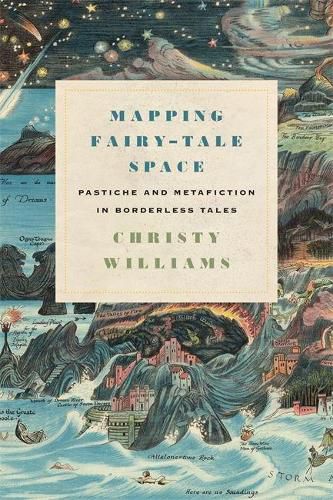Mapping Fairy-Tale Space: Pastiche and Metafiction in Borderless Tales
Christy Williams

Mapping Fairy-Tale Space: Pastiche and Metafiction in Borderless Tales
Christy Williams
This title is printed to order. This book may have been self-published. If so, we cannot guarantee the quality of the content. In the main most books will have gone through the editing process however some may not. We therefore suggest that you be aware of this before ordering this book. If in doubt check either the author or publisher’s details as we are unable to accept any returns unless they are faulty. Please contact us if you have any questions.
Mapping Fairy-Tale Space: Pastiche and Metafiction in Borderless Tales by Christy Williams uses the metaphor of mapping to examine the narrative strategies employed in popular twenty-first-century fairy tales. It analyzes the television shows Once Upon a Time and Secret Garden (a Korean drama), the young-adult novel series The Lunar Chronicles, the Indexing serial novels, and three experimental short works of fiction by Kelly Link. Some of these texts reconfigure well-known fairy tales by combining individual tales into a single storyworld; others self-referentially turn to fairy tales for guidance. These contemporary tales have at their center a crisis about the relevance and sustainability of fairy tales, and Williams argues that they both engage the fairy tale as a relevant genre and remake it to create a new kind of fairy tale. Mapping Fairy-Tale Space is divided into two parts. Part 1 analyzes fairy-tale texts that collapse multiple distinct fairy tales so they inhabit the same storyworld, transforming the fairy-tale genre into a fictional geography of borderless tales. Williams examines the complex narrative restructuring enabled by this form of mash-up and expands postmodern arguments to suggest that fairy-tale pastiche is a critical mode of retelling that celebrates the fairy-tale genre while it critiques outdated ideological constructs. Part 2 analyzes the metaphoric use of fairy tales as maps, or guides, for lived experience. In these texts, characters use fairy tales both to navigate and to circumvent their own situations, but the tales are ineffectual maps until the characters chart different paths and endings for themselves or reject the tales as maps altogether. Williams focuses on how inventive narrative and visual storytelling techniques enable metafictional commentary on fairy tales in the texts themselves. Mapping Fairy-Tale Space argues that in remaking the fairy-tale genre, these texts do not so much chart unexplored territory as they approach existing fairy-tale space from new directions, remapping the genre as our collective use of fairy tales changes. Students and scholars of fairy-tale and media studies will welcome this fresh approach.
This item is not currently in-stock. It can be ordered online and is expected to ship in 7-14 days
Our stock data is updated periodically, and availability may change throughout the day for in-demand items. Please call the relevant shop for the most current stock information. Prices are subject to change without notice.
Sign in or become a Readings Member to add this title to a wishlist.


